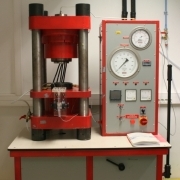JE1: Experimental geophysics
-
Composition, Structure, and Evolution of the Deep Earth
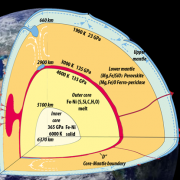
Our goal is to provide experimental constraints on the composition, structure, and evolution of the deep Earth. For this we use high-pressure and high-temperature experimental tools to reproduce deep planetary P-T conditions in the laboratory. We can then study mineralogical, petrological and geochemical processes such as phase transitions, phase equilibria, elemental partitioning, isotopic fractionnation; and measure physical properties of minerals and rocks such as equations of state, elasticity, electronic and transport properties. Our work is carried out on recovered samples, using analytical tools such asthe SEM, FIB, EPMA, LA-ICPMS, TEM, nanoSIMS, etc… as well as in situ using synchrotron x-ray techniques such as diffraction, spectroscopy, diffusion, and imaging. Studying the deep Earth
Our most recent efforts have focussed on early differentiation (core formation, magma ocean solidification) and its impact on the generation and subsidience of geophysical structure in the deep mantle. We are also constraining primordial processes such as terrestrial accretion through the combination of experiments and cosmochemical analysis. We continue to explore the phase diagrams of deep mantlerocks and the physical and chemical properties of the deep mantle.
Mantle peridotite: our starting point for investigating deep-mantle processes such as phase diagrams, phase transitions, element partitionning and fractionnation, physical and chemical properties, etc… 
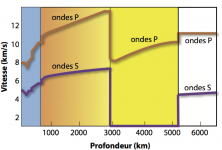
Seismic observation provides elastic properties of the deep Earth. Our aim is to explain these observations in terms of mineralogical and petrological processes. Phase transitions are responsible for the 410, 550, and 660-km discontinuities. Similarly, from a geochemical standpoint, we can explain the abundance and fractionnation of siderophile trace elements in the mantle by core formation, and constrain early differentiation processes through experiments. Experimental and Analytical Tools
We generate the extreme pressure and temperature conditions relevant to deep planetary interiors in the laboratory, using three types of presses: the piston-cylinder press, the multi-anvil press, and the laser-heated diamond anvill cell.
Piston-Cylinder Press
4 GPa, 2500°C
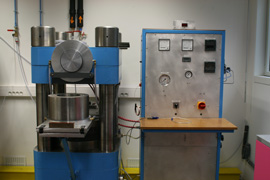
Multi-Anvil Press
26 GPa, 2700°C
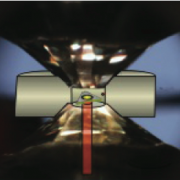
Laser-Heated Diamond Anvil Press
400 GPa, 5000°C
-

James Badro IPGP 
Manuel Moreira IPGP 
Nicolas Wehr IPGP 
Ingrid Blanchard IPGP
Coming soon-
- Terrestrial Accretion Under Oxidizing Conditions
J. Siebert, J. Badro, D. Antonangeli, F.J. Ryerson
Science 339, 1194 (2013)
- Metal-silicate partitioning of Ni and Co in a deep Magma Ocean
J. Siebert, J. Badro, D. Antonangeli, F.J. Ryerson
Earth Planet. Sci. Lett. 321-322, 189 (2012)
- Terrestrial Accretion Under Oxidizing Conditions

